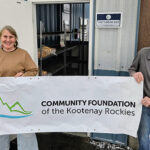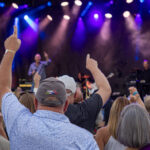Home »

The entire world shook March 11, 2011
A year ago today I was pouring over Filipino dailies and watching CNN Asia, trying to glean as much information about the tsunami and 9.0 earthquake that knocked Japan to its knees the day before.
For some reason that massive disaster has stuck with me as being the most startling and awakening natural incident, made so much worse because of the worst-case-scenario terror of the nuclear age, that has occurred in my lifetime. I am 48. Even the 2004 earthquake and tsunami that battered the Indian Ocean area and killed more than 250,000 didn’t push me down into a chair with a ‘holy crap’ hand like the Japanese disaster.
No offence to the quarter of million people who lost their lives in 2004, when the world was stopped in its tracks by the reality that our shared home had shivered its haunches and the speck existences living from its graces were dealt a deathly hand.
March 11, 2011 began completely differently for us. We were up at the crack of dawn to get to the Canadian Rockies International Airport to catch a flight to Vancouver. From there we were flying to Korea and then on to Manila, The Philippines.
Carrie was going to The Philippines to take part in an economic development/local government project, which the Association of Canadian Community Colleges is involved in. I was tagging along to go insane with my cameras before returning nine days later to begin a Community Futures East Kootenay business start-up program.
Having never been to Asia before, it was a wildly exciting time for us. The world had never seen wide open and available before.
Then Carrie turned on the television as we finished packing.
We stopped packing and sat down on the bed. A tsunami warning – for the entire northern realm of the Pacific Ocean was in effect. Japan had been hammered again by the Ring of Fire. I did the math in my head. At the time we were scheduled to land at YVR – in Richmond, aka New Holland – the tsunami was supposed to be arriving on B.C.’s shoreline.
When our plane dived out of the low-hanging clouds above Vancouver that morning, a part of me thought we might be descending into something all-together different.
Thankfully, we just landed on a rainy Vancouver morning. No tsunami had arrived or would arrive. The might of the Pacific Ocean swallowed the radiance of the 9.0 quake – save for Japan which was punched in the guts.
My news seeking nose then led me to try and determine if The Philippines was going to be hit by a tsunami. A warning was issued for the northern islands. Manila, located on the opposite side of the 7,100 island archipelago, was in no danger.
The flight from Vancouver to Seoul follows the B.C. coast to the Aleutian Islands, then arches down the Kamchatkan Peninsula and beside northern Japan. The flight then banked across Japan, just north of Sendai – the capital city of the Miyaki Prefecture, which had only hours earlier been the centre of one of the world’s most jarring natural disasters. From 35,000 feet above, all I could see was thick cloud cover. It took about half an hour to fly west-to-east over Japan, and all I was able to glimpse was some western coastal mountains and shoreline before the flight set out over the Sea of Japan.
Once we were in Seoul’s Incheon Airport, a massive, shining, clean travel portal, there didn’t seem to be any grave feeling or hush. We noticed a few pods of Japanese travelers milling around flight arrival/departure screens, trying to figure out what they were going to do. The departure screens were filled with ‘flight canceled’ notices from Japanese airfields. And flights scheduled to leave Japan were ‘delayed.’
It was midnight after we landed at Ninoy Aquino International Airport (Paliparang Pandaigdig ng Ninoy Aquino). The airport was a stark contrast to Incheon – from sparkling clean and orderly to aged and chaotic. Three thousand kilometers north in Japan, one of the wealthiest nations in Asia and the most earthquake and tsunami-prepared nation on Earth, chaos had been given a new definition. It had been more than 24 hours since the earthquake and tsunami had struck.
The next morning (a year ago today), there were apocalyptic headlines in the daily papers in Manila. The only impact The Philippines felt was a ‘slight burp’ on its northern shores, where a few waves may have been a tad higher than normal. That was it, luckily for them. The sheer expanse of the Pacific devoured a potential natural nightmare.
During the next week, Filipino newspapers and television news, as well as CNN Asia, was non-stop discussion and consideration of life on the Ring of Fire.
The Philippines is far more likely to be hammered by natural disasters than Japan, as it is more seismically active, has more volcanic activity and is also in typhoon alley.
On March 13 or 14, an editorial in one of the major English dailies (most media in The Philippines is in English) declared that Metro Manila would be toast if a similar incident occurred off its coast. Shallow Manila Bay, heavily dotted with thatched, stilted huts, would make for a terrifying runway for the surging mass of a tsunami, which would drive deeply into the massive, sprawling megalopolis, home to about 12 million souls.
Worse, though, would be the carnage from a major earthquake (8.0 and up), the editorial declared. The Philippines’ building codes are nowhere near as strict as Japan’s, which requires multiple seismic considerations.
I was seated in our 35th floor hotel room, looking northwest toward Manila proper, lost in a thick haze. We were staying in Pasig City, a divergent place that glitters with the glass and steel of a financial centre while all around it the reality of life in the Philippines rampages – a million honking horns and friendly smiles.
Reading about how Philippine buildings weren’t the place you want to be when the Ring of Fire does its thing nearby was something to make one pause and go, ‘hmm,’ while enjoying a morning cup of joe.
The Japanese disaster woke the Philippines up to the terrifying realities that it was one day, again, going to become a victim of the Ring of Fire.
The fact is that if the earthquake and tsunami that hit Japan happened near Manila, or any of The Philippines’ major cities, such as Davao City, Cebu City or Zamboanga City, the death toll and carnage would make what happened in Japan seem trite in comparison.
It still seems unbelievable that only about 20,000 people perished on March 11, 2011. A great many people lost their lives but wise city planning, strict building codes and the brilliant leadership of some elected officials, such as the late Kotaku Wamura, who pushed for a Cadillac model of a seawall to protect Fudai (population 3,000). He was ridiculed and attacked for being financially wasteful when he fought for and completed the seawall that was more than twice as high as those elsewhere along the nearby coast.
Having lived through a tsunami decades before, Mayor Wamura vowed his town would not be pushed to the brink of extinction again and a 66-foot seawall was erected.
On March 11, sea water rose as high as 66 feet against the Fudai seawall, and some spilled over, but the wall did its job and the town was saved.
Another visionary responsible for sparing a city from ruin is former Manitoba Premier Duff Roblin, who fought for and was able to have the Floodway constructed. The 48-kilometre channel that diverts Red River water around Winnipeg, which has now saved the city of 700,000 from more than 20 floods since its completion in 1969, was built for $63 million. At the time it was the second largest earth moving project in human history – after the Panama Canal.
It is estimated the recently expanded (widened) Floodway has saved Winnipeg and Manitoba more than $10 billion in flood damage. In the Flood of the Century (1997), the Red River would have risen to the fifth floor of downtown Winnipeg buildings.
Duff’s Ditch – something he was vilified for by opposition politicians – is another example of how smart planning for the inevitable pays off.
Carrie is heading back to the Philippines in a few weeks to continue with her project and we are hoping to return a few more times over the next few years.
It is a nation that is going through transformation, again. It’s a poor nation, indicative of the fact that the largest portion of its Gross Domestic Product comes from overseas workers sending wages home, which are taxed by the Philippine government.
Like all other nations, it recognizes where it is located and from experience and knowledge, it knows it faces a potential nightmare when the Ring of Fire unleashes its fury again.
The enormity of the preparation required to stave off, as best as possible, a devastating earthquake and tsunami, is such that it must seem impossible to Filipino leaders. But it something I hope and pray they continue to focus upon.
More than 350,000 people were displaced by the March 11, 2011 tsunami, which literally erased some communities from existence. Again, Japan is the most prepared nation in the world for seismic events.
Being prepared surely saved hundreds of thousands of lives and millions would have been displaced.
Places like The Philippines and other poor Ring of Fire nations, some of which were hammered in 2004, live with the threat of something happening every day. That threat is all the more real and terrifying today for them, and for all of us in the world, as March 11, 2011 is etched in our minds.
It’s a day I shall never forget. And I hope our Pacific Ring of Fire neighbours don’t, as well, and apply as many resources as they can to measures that will help them when the inevitable happens.
For stunning images of the disaster and the aftermath, go to: https://news.nationalgeographic.com/news/2012/03/pictures/120309-japan-tsunami-earthquake-anniversary-fukushima/
Ian Cobb/e-KNOW







